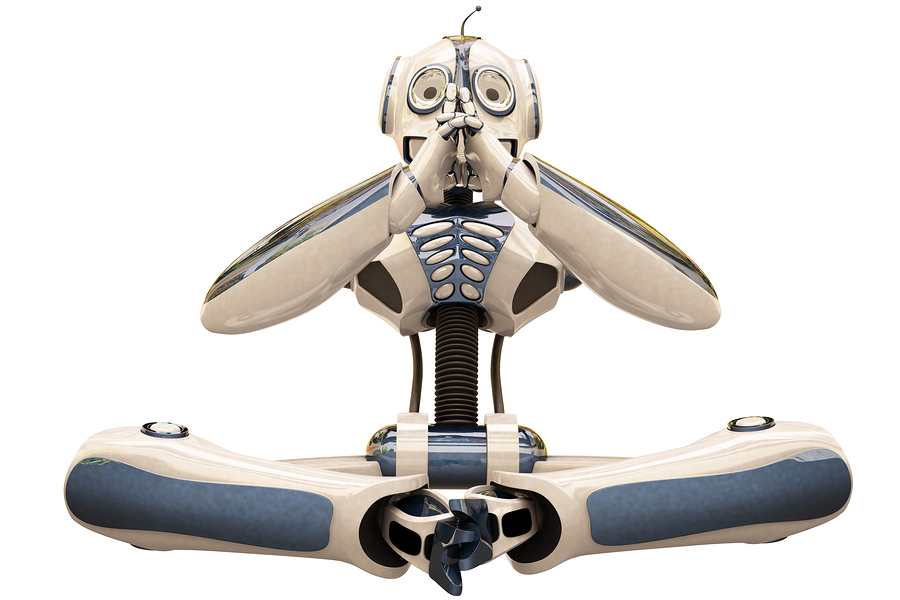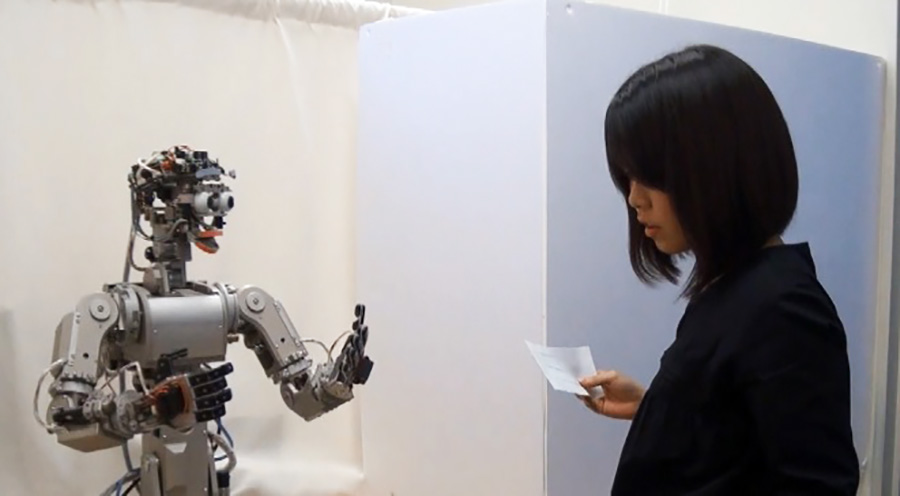
Robohub.org
One being for two origins: A new perspective on roboethics

The concept One Being for Two Origins, from the teachings of Buddha, considers the unification of technology, nature, and human beings. It emerges from the theory of the three aspects: The values of the “Good”, the “Bad”, and “Muki” (Avyakata). The theory of One Being for Two Origins follows the theory of the three aspects and explains a mechanism for how values, such as the good and the bad, emerge in reality using the three aspects. The theory has a contradictory structure, hence it can be difficult for those with a scientific background to fully comprehend it. In this interview, Nagoya University’s Associate Professor Hiroko Kamide shares with us her insights on robot ethics, with a focus on One Being for Two Origins.
Date: December 5th 2016
Interviewee: Prof. Hiroko Kamide, Designated Associate Professor, Nagoya University, Japan
Interviewer: Dr. Yueh-Hsuan Weng, Co-founder of ROBOLAW.ASIA and Fellow at CLAST AI & Law Research Committee (Beijing) and Tech and Law Center (Milan)

Q1 WENG: Thank you for agreeing to an interview with us. Can you tell us a little about yourself and your background?
KAMIDE: My background is social psychology. During my doctoral course, I studied close relationships and well-being. After receiving my PhD, I started researching human-robot interaction and collaborated with engineers to help realize so-called “human-friendly robots”. We established psychological methods to evaluate humanoids, and subsequently developed human-friendly behaviors for robots. I still collaborate with engineers to consider the adaptive way of introducing advanced technology, such as robots and self-driving cars, from an interdisciplinary approach.
Q2 WENG: Currently you are also in charge of a special interest group on robots and philosophy at The Robotics of Japan (RSJ). Can you tell us something about your RSJ Special Interest Group on Philosophy in Robotics?
KAMIDE: In the RSJ group, we discuss the approach to technology from an interdisciplinary standpoint. The members are from psychology, philosophy, law, sociology, and engineering. Psychological evaluation, like technological advancement, is important to realize robots that your average person can accept in their daily-life. This collaborative work between psychology and engineering is crucial to developing technologies that can satisfy a human’s needs and expectations. But sometimes we experience terrible events that we cannot control: nuclear accidents, wrongful use of robots, etc. Therefore we started to investigate what the appropriate approach is when implementing and dealing with the cutting-edge technology. It’s a the responsibility of researchers to convey information to ordinary users about how we should deal with technology in order to maintain harmony between technology, nature, and humans.
Q3 WENG: What is the theory One Being for Two Origins? Why is it important to the unification of humanity and nature?
KAMIDE: The theory of One Being for Two Origins has a contradictory structure, and it’s difficult for those with a scientific background to fully understand. At the first step, we begin with a theory of values—the theory of the three aspects—as an introduction to the theory of One Being for Two Origins. The theory of three aspects explains the mechanism of how values, such as good and bad, emerge from the three concepts of the good, the bad, and the “Muki”. Then the theory of One Being for Two Origins follows the theory of three aspects as the fundamental mechanism of order. Through the theory of One Being for Two Origins, we become able to recognize the truth and biases behind language, and as such can avoid conflicts between technology, nature and human-beings.
Q4 WENG: Your paper “One Being for Two Origins – A necessary awakening for the future of robotics” has been presented at the 2016 IEEE ARSO Workshop in Shanghai, China. The co-author is Professor Masahiro Mori, who is a world famous roboticist because of his “uncanny valley” theory. How come you decided to choose this topic? Does the concept One Being for Two Origins have any relationship with “uncanny valley”?
KAMIDE: His theory of uncanny valley has a very thoughtful and groundbreaking perspective, therefore many researchers in the world still refer to his theory. As for my impression, he developed a very clear sense of perspectives that leads us to understand the theory of uncanny valley. His method of observing the truth of the world is in line with the teachings of the Buddha.
Q5 WENG: Regarding regulation for robotics, you pointed out that there is widespread misunderstanding from regulators. What is the misunderstanding? What kind of legal crisis will materialize if they don’t change their way of thinking? How can your proposed theory help solve this legal crisis?
KAMIDE: As the theory of three aspects explains, the value of good and bad are just derived from Muki, that transcends such values and is a true quality of the technology. Useful technology is positive. On the other hand, it would be bad if technology harms people. Technology is fundamentally neither good nor bad. It’s the manner in which technology is applied and operated by humans that is either good or bad. It is humans themselves that attribute these aspects to the technology.
Regulations are attempts to eliminate the bad aspects of technology. However, it is not correct to assume that only the good remains when the bad is eliminated, because technologies themselves are the Muki. And if bad did not exist, good would not exist either, as one is parasitic on the other. To eliminate the bad is to interfere in the working of the Muki in producing these values. The same occurs robots.
Our mindset determines how we approaches the Muki. If we are not mentally prepared, Muki will transform into bad. If we are mentally prepared, we can treat the Muki as good. Bad can transform into good then, of course, good can also transform into bad. And the more good qualities a robot possesses, the stronger its bad qualities will be, following the transformation. Sharp scalpels save lives, but sharp daggers kill people. This is because the working of the Muki is powerful.
In all cases, the mindset of humans is crucial. So, the responsibility of us in robotics is to ensure that technology is not used in bad ways. We must both establish methods of using robots, and work to refine users’ mindsets.
Q6 WENG: Robotics is like a double-edged sword, it can either help or kill people. Robotic lethal weapons present a dilemma. Should they be banned or not? Do you have any comment on this?
KAMIDE: The problem is not in robotics but in ourselves—we who raise such dualistic questions. As I mentioned, the technology of robotics doesn’t have any values. Robotics is not double edged sword at all; our minds are double edged. People easily attribute these values to the physical entity but it is not true. We have to try and observe the fact that we see not what we see, but what we want to see.
Q7 WENG: Do you agree with using dualism as the meta-principle to teach robots right from wrong? If not, do you think it is possible to adopt your theory into creating ethical robots’?
KAMIDE: The “right” and “wrong” is always in the eye of the beholder, and there are no absolute standards. As long as humans accept that they are subject to subjective mechanisms of perceiving the world, it won’t be troublesome to develop ethical robots. But if humans see the “right” and “wrong” as existing independently, objective, it will be definitely problematic.
Q8 WENG: What are major challenges for implementing One Being for Two Origins into robot ethics?
KAMIDE: Clarifying the importance of applying wisdom, not just knowledge. In this theory, knowledge refers to the ability to divide the phenomena into detailed classifications in order to understand the difference between things. On the other hand, wisdom is necessary to discover the meaning in the different things. Knowledge is developed through education, usually, but wisdom is not taught explicitly. Therefore, we are accustomed to dualistic thinking based on knowledge, that divides the world into its constituent parts, but we have difficulty uniting the parts using wisdom, in a way of monism. This is one of reason that we often raise dualistic questions, and eventually develop conflicts.
Q9 WENG: Professor Shigeo Hirose gave an insight called “Morality Engineering” in his short review “A Dialog on Robots” Vol. 7, No. 4, JRSJ. Do you think that One Being for Two Origins might be helpful in implementing his proposal of “Morality Engineering”?
KAMIDE: His article is very interesting. Opinions from both sides who are optimistic or pessimistic to a robotized future society are quite realistic and thoughtful. Recently many philosophers have started to think about morality in robotics. His “Morality Engineering” suggests implementing “rational egoism”, and I agree with the importance of this approach. One Being for Two Origins is the methodology to transcendent and unify opposite aspects of the phenomena to see the truth. So it is helpful to consider how “rational egoism” truly functions in the interactions between humans and robots.
If you enjoyed this article, you may also also enjoy:
- Considering robot care, ethics & future tech at #ERW2016 European Robotics Week
- On the ethics of research in robotics, with Raja Chatila
- A European perspective on robot law: Interview with Mady Delvaux-Stehres
- Open Roboethics initiative delivers statement to United Nations CCW
See all the latest robotics news on Robohub, or sign up for our weekly newsletter.
tags: c-Politics-Law-Society, Culture and Philosophy, ethics, human-robot interaction, interview, Masahiro Mori, Social aspect, Uncanny Valley




